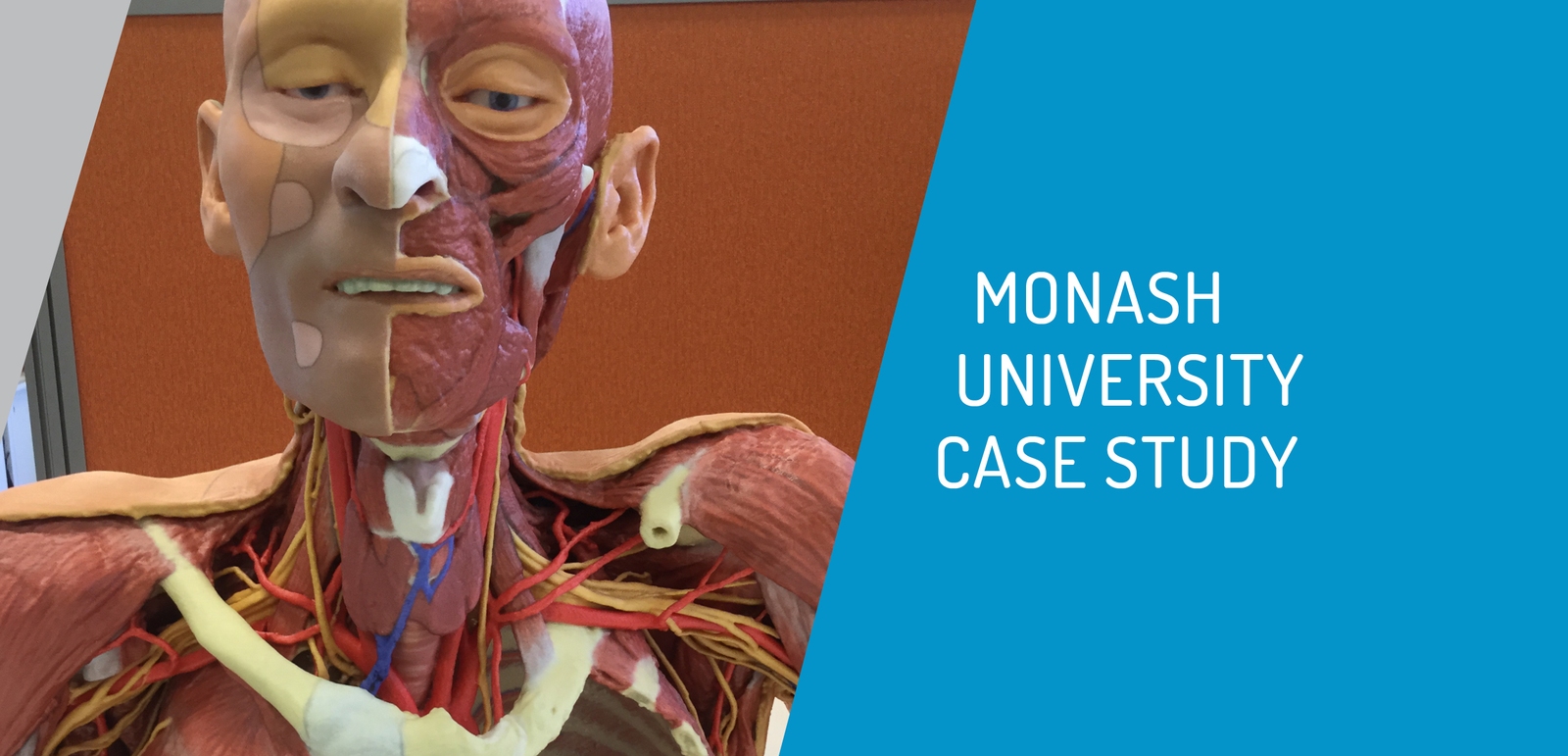Monash Clayton is considered a Major Research Centre
Monash University Clayton Campus is the largest of Monash University’s campuses, with eight faculties represented. An impressive 1,200 high-performing, biomedical students are enrolled at the Centre for Human Anatomy at Clayton campus every semester.
The Biomedical Department invest in a Mimaki 3D Colour Printer
We chatted to Dr Justin Adams, Senior Lecturer, and Michelle Quayle, Technical Officer, from the Centre for Human Anatomy, about their recent investment of a Mimaki 3D colour printer and what this means for their department. Their goal is to continue to be a leader in the medical education space.
“Amongst other achievements, there’s been over 220 citations from just one of the papers our 3D printing group published in 2014. With a dozen or more other 3D printing papers published, garnering over 400 citations across them, so our research is certainly highly respected in the industry”, says Adams.
To remain ahead of new developments and in-line with their position as a major research centre, Monash invested in the new Mimaki 3D colour printer as a teaching tool to enable them to print anatomical teaching models.
“Since 2013, the Centre have been involved in 3D printing, however, the Mimaki is our first 3D inkjet printer”, says Adams.
The Mimaki 3D Printer is a State-of-the-art, Safe Teaching Tool
Historically 3D colour printing technology only offered a powder-based option which resulted in colour inconsistency and fragile prototypes.
To continue the Centre’s advancements in anatomical sciences Monash sought a machine with stability, high-colour fidelity and high accuracy.
“Until now, 3D printers were more prototyping machines with end pieces being fragile with colour discrepancy throughout the printing. Colour fidelity is so important for the detail we require and the Mimaki allows us to print consistently, in full colour,” says Adams.
Providing students with the best access to gold standard real human tissue is expensive, requires regular replacement and faces ethical and legal issues, prompting a motivation to develop alternative teaching tools for the department. With such high colour fidelity, the Mimaki 3D colour printer is a great and safe alternative.
“We already have an honours student using the Mimaki for micro-imaging”
Prior to their investment, Monash ran a beta testing phase which proved very successful.
Michelle commented, “This beta phase allowed us to check the machine standards. It also proved to reduce OH&S issues which were present with the powder-based printer.
I no longer need to worry about dealing with powder dust, producing the anatomical pieces is now so much easier.
Mimaki and Headland were both very supportive throughout the beta phase and we feel reassured by the ongoing support we are receiving.”

Pictured L-R: Nigel Kelly (Headland Machinery), Paul McMenamin, Michelle Quayle, Justin Adams (Monash University).
Read more about Monash University here.
Read more about the Advanced Manufacturing Division and the Mimaki 3D Colour Printer from Headland Machinery here.

